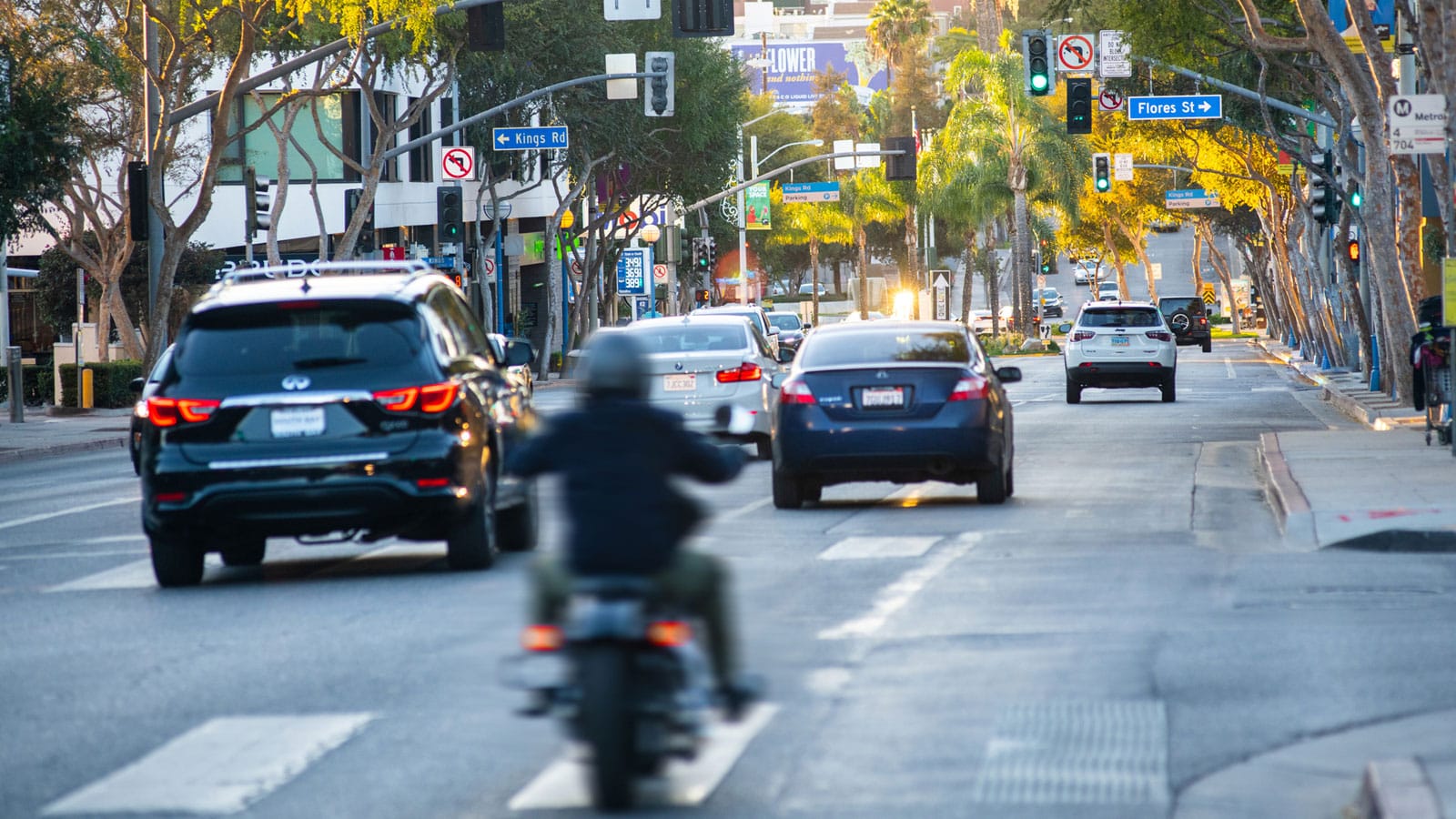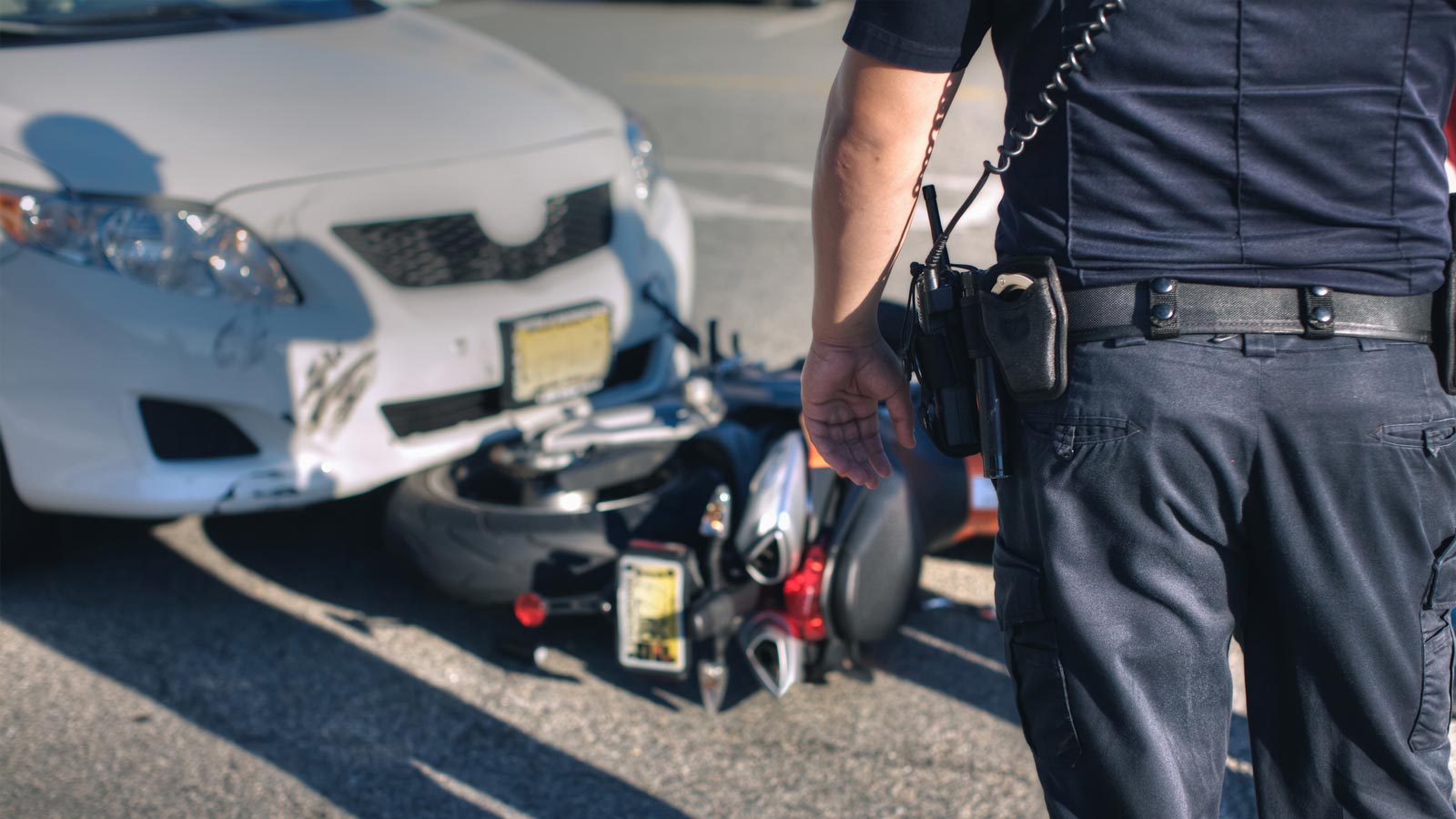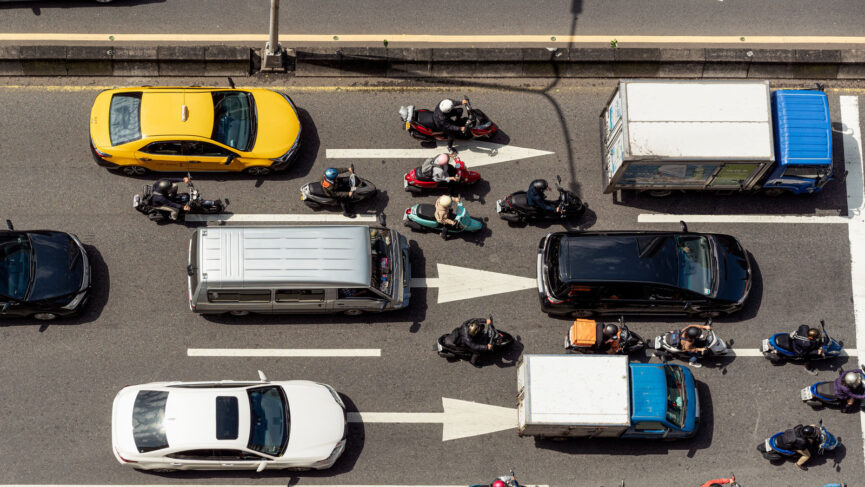Introduction to Lane Splitting and California Law
Lane splitting, also known as white-lining or stripe-riding, is a maneuver used by motorcyclists to move between lanes of slow-moving or stopped traffic. This practice allows riders to navigate through traffic congestions by riding along the lane dividing lines. While this can be an efficient way to avoid gridlocks, it is not without controversy and risks. Lane splitting has been a topic of debate, particularly concerning the safety of motorcyclists and other road users.
The Current Legal Status of Lane Splitting in California
California stands unique in its approach to lane splitting. It is the first state in the United States to formally legalize the practice under specific circumstances. In August 2016, California Assembly Bill No. 51 was signed into law, defining the guidelines which permit motorcyclists to lane split in a safe and prudent manner. According to the California Vehicle Code 21658.1, lane splitting is allowed when a motorcyclist is not traveling more than 10 mph faster than the traffic around them, and it is generally considered safer to lane split between the far left lanes of multi-lane roads. However, it is still subject to interpretation by law enforcement, and motorcyclists must be cognizant of the conditions under which they choose to lane split to avoid infractions.
The objective of this blog post is to delve into the intricacies of lane splitting and its impact on motorcycle accidents within the state of California. We aim to clarify the legalities, understand the risks, and address the common misconceptions surrounding this practice. Whether you are a seasoned motorcyclist or a casual commuter, knowing how lane splitting affects road safety can be pivotal in making informed decisions on the road. Furthermore, for those involved in motorcycle accidents, this knowledge can be crucial in understanding your rights and the nuances of liability in the event of a lane-splitting incident. At
Blair & Ramirez LLP, we are committed to providing you with comprehensive insights and expert legal guidance on this critical topic.

Historical Context of Lane Splitting in California
Brief History of Lane Splitting in California
Lane splitting has been a part of California’s motorcycling fabric for decades, with its roots tracing back to the rise of motorcycle use after World War II. As veterans returned and motorcycle popularity surged, so did congestion on the roadways. Motorcyclists began navigating between cars as a means to avoid traffic jams, although at the time, no laws specifically permitted or prohibited this practice. This gray area left lane splitting in a legal limbo, with riders operating under the discretion of law enforcement and using their judgment to ensure safety.
Changes in Laws and Regulations Over Time
The practice of lane splitting remained largely unregulated until the 21st century. For many years, the
California Highway Patrol (CHP) provided guidelines for safe lane splitting, but these were not enforceable as law. It wasn't until 2016 that a clear legal status was established. Assembly Bill No. 51 officially recognized lane splitting, giving California the distinction of being the only state to formally legalize it. Following the bill's enactment, the CHP was tasked with developing educational guidelines, signaling a shift from an informal understanding to codified law. This move towards regulation was a significant development, as it provided a legal framework for motorcyclists to safely engage in lane splitting, and offered a reference point for law enforcement and the courts to handle lane-splitting incidents.
The Legalities of Lane Splitting in California
Detailed Explanation of California Vehicle Code 21658.1
California Vehicle Code 21658.1 came into effect as a groundbreaking statute, specifically addressing the practice of lane splitting. The law defines lane splitting as "driving a motorcycle, which has two wheels in contact with the ground, between rows of stopped or moving vehicles in the same lane, including on both divided and undivided streets, roads, or highways." California's recognition of lane splitting reflects a significant advancement in traffic law, acknowledging the practical behavior of motorcyclists and aiming to regulate it for the greater safety of all road users.
How the Law Defines Safe and Unsafe Lane Splitting
The California Vehicle Code does not specify speed limits or the precise manner in which lane splitting should be executed; instead, it provides a general framework. The safety of lane splitting is determined by various factors, including the speed of surrounding traffic and the speed differential between the motorcycle and other vehicles. Generally, lane splitting is considered safer in slower traffic and less safe at higher speed differentials. Unsafe lane splitting may be considered when a motorcyclist is moving substantially faster than the flow of traffic or engaging in the practice in an unpredictable or reckless manner.
Penalties and Consequences for Improper Lane Splitting
Violations of safe lane splitting practices can lead to traffic citations under the general unsafe driving statute in California. The penalties can range from fines to points on the motorcyclist’s driving record. In severe cases, particularly where unsafe lane splitting leads to an accident, riders could face higher penalties, including increased fines, higher insurance premiums, and in cases involving injury or death, more serious criminal charges. Additionally, improper lane splitting can impact civil liability, potentially reducing compensation in accident claims due to shared fault or contributory negligence.

Lane Splitting and Motorcycle Accident Statistics
General Motorcycle Accident Statistics in California
California, with its extensive network of highways and favorable weather, has one of the highest numbers of registered motorcycles in the United States. Unfortunately, this prevalence correlates with a significant number of motorcycle accidents. Statistics from the California Office of Traffic Safety show that thousands of motorcycle accidents occur each year, with a considerable proportion resulting in serious injuries or fatalities. While motorcycles represent a small fraction of the total vehicle population, they are disproportionately represented in traffic collision statistics, often due to visibility issues, road conditions, and the vulnerability of riders.
How Many Accidents Involve Lane Splitting
Determining the exact number of accidents that involve lane splitting can be challenging due to reporting inconsistencies and the evolution of the laws surrounding the practice. However, research before the formal legalization suggested that lane-splitting collisions constituted a measurable portion of motorcycle accidents, particularly during heavy traffic congestion. Post-legalization data has been subject to ongoing study to determine the full impact of the law's change. Preliminary findings have suggested that while lane splitting is a factor in accidents, the practice, when done within the legal parameters, does not significantly increase the risk of fatal accidents.
Comparisons with States Where Lane Splitting is Illegal
Contrasting California's statistics with states where lane splitting is illegal presents a complex picture. While one might expect that prohibiting lane splitting would lead to fewer motorcycle accidents, this is not necessarily supported by data. In fact, some studies indicate that lane splitting, when performed under certain conditions, can reduce the risk of rear-end collisions for motorcyclists, which are a common type of accident in stop-and-go traffic. However, without a nationwide legal standard, comparing statistics across states can be difficult due to differences in traffic density, motorcycle usage, and reporting practices. It remains a topic of discussion among safety experts and legislators alike.
How Lane Splitting Affects Motorcycle Safety
Arguments for and Against Lane Splitting from a Safety Perspective
Proponents of lane splitting argue that the practice can reduce traffic congestion and may decrease the risk of certain types of accidents, particularly rear-end collisions in stop-and-go traffic, which can be perilous for motorcyclists. They contend that lane splitting allows riders to take control of their safety by navigating out of blind spots and avoiding the dangers of stationary traffic.
On the other hand, opponents raise concerns about the relative unpredictability of lane splitting, suggesting that the sudden appearance of a motorcycle between lanes can startle car drivers, potentially leading to swerving or other erratic responses that may result in collisions. They also point to the increased risk of accidents due to close proximity to vehicles and the limited space to maneuver, which can be particularly dangerous at higher speeds or in less visible conditions.
Safety Tips for Motorcyclists Who Choose to Lane Split
For motorcyclists who decide to lane split, safety should be paramount. Riders are advised to split lanes only when traffic is moving slowly or stopped, ensuring they themselves do not exceed a speed that is 10 mph faster than the vehicles around them. Wearing high-visibility gear to increase the likelihood of being seen by drivers is crucial. Additionally, riders should always be vigilant of the surrounding traffic conditions, avoiding lane splitting near freeway exits or where lanes merge. It’s important to anticipate potential movements from other vehicles and to be prepared to react appropriately.
The Role of Other Motorists in Ensuring Safety
While motorcyclists bear the responsibility of riding safely, other motorists also play a vital role in ensuring the safety of lane splitting. Drivers should remain aware of their surroundings and regularly check mirrors, especially when traffic slows, as motorcyclists may be more likely to lane split in these conditions. Signaling intentions well in advance of lane changes and avoiding distractions are also critical practices that can prevent accidents. Mutual respect and awareness on the road can significantly contribute to safer conditions for both motorcyclists and vehicle drivers.

The Impact of Lane Splitting on Motorcycle Accident Claims
How Lane Splitting Can Affect Liability in an Accident
In California, where lane splitting is legal, its role in an accident significantly affects the determination of liability. When a motorcyclist is involved in a collision while lane splitting, the legality of the maneuver at that moment is scrutinized. If a motorcyclist was splitting lanes in accordance with California Vehicle Code 21658.1—traveling at a speed that was safe and prudent given the surrounding traffic conditions—their actions may not negatively impact their claim. However, if it is found that the rider was splitting lanes in an unsafe manner, perhaps traveling at a speed excessively faster than the flow of traffic or maneuvering erratically, this could shift partial or full liability onto the rider.
The Complexity of Proving Fault in Lane-Splitting Accidents
Proving fault in lane-splitting accidents can be exceptionally complex. Unlike other traffic maneuvers, lane splitting involves the motorcyclist actively weaving through moving or stationary traffic, which can lead to disputes about the motorcyclist's speed, the behavior of the drivers of the other vehicles, and the exact conditions of the road at the time of the accident. There may be a lack of physical evidence, and witness statements can vary widely. Because the motorcyclist’s actions are central to the case, demonstrating that they were operating their motorcycle in a safe, legal manner is often challenging and requires thorough investigation.
The Importance of Legal Representation in Such Cases
Due to these complexities, legal representation becomes crucial in motorcycle accident claims involving lane splitting. An experienced attorney can navigate the intricacies of traffic laws, evaluate evidence, and build a strong case to support the client’s position. Legal experts can also negotiate with insurance companies that may be predisposed to view lane splitting unfavorably, ensuring that the motorcyclist's rights are defended. Moreover, legal counsel can assist in accurately assessing the damages and seeking fair compensation, especially in cases where fault is shared or liability is disputed.
Preventative Measures and Safe Riding Advocacy
Educational Initiatives on Lane Splitting
Recognizing the risks associated with lane splitting, there has been a push for educational initiatives aimed at both motorcyclists and drivers. For riders, programs developed by the California Highway Patrol (CHP) and other motorcycle safety organizations focus on promoting the best practices for lane splitting. These initiatives often include guidance on safe speeds, the importance of wearing proper gear, and tips for assessing traffic conditions. Educational campaigns also target car drivers, informing them of the legal status of lane splitting and encouraging them to check for motorcyclists in their mirrors, especially during traffic congestion.
Advocacy for Better Awareness Amongst All Road Users
Advocacy groups work tirelessly to foster a mutual understanding and respect between motorcyclists and drivers. They emphasize the shared responsibility for road safety and lobby for laws that protect riders without compromising the flow of traffic. By pushing for public service announcements, distribution of informative materials at DMVs, and the incorporation of lane-splitting awareness into driver education programs, these organizations strive to create a safer environment on California’s roads for everyone.
Lane Splitting in California - Moving Forward
Lane splitting in California stands as a unique aspect of the state's traffic laws, legalizing what is a common practice among motorcyclists while also underscoring the importance of safety and responsibility. As we've explored, the impact of lane splitting on safety, liability, and accident claims is significant and multifaceted, and preventative measures are continuously advocated for by various organizations.
Safe Riding Practices and Consulting Legal Help
At Blair & Ramirez LLP, we advocate for the highest standards of safe riding practices, including prudent lane splitting, and we call on all road users to maintain vigilance to ensure safety for everyone. If an accident occurs, it's vital to have knowledgeable legal guidance to navigate the complexities of motorcycle accident claims. To this end, we offer a
free case evaluator to provide insight into the potential value of your case. Let our expertise in the field of motorcycle law protect your rights and help secure the compensation you deserve.





